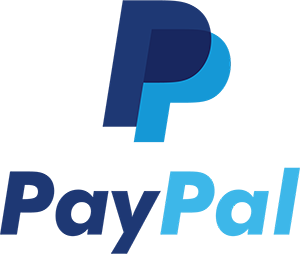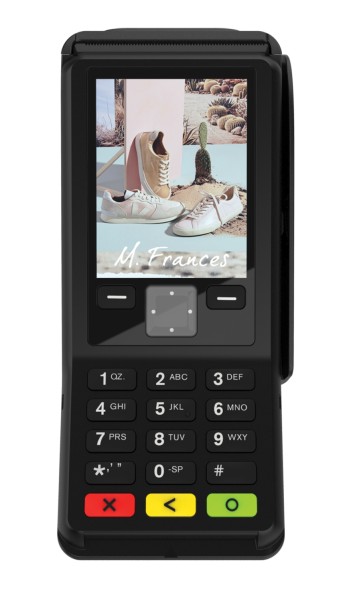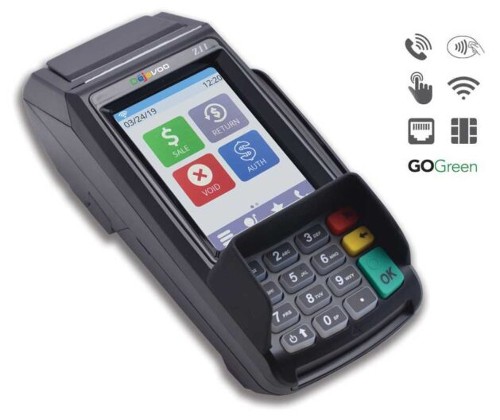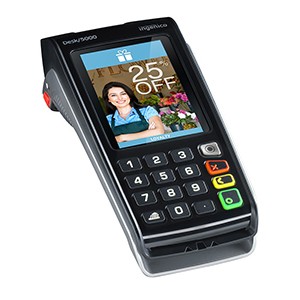Credit card processing is a necessity for every business, especially as more customers prefer to order online or purchase in-store using contactless payments. The fees associated with processing credit cards can be a large expense for your business. However, choosing the right processor can significantly cut costs.
Based on our evaluation of 26 data points and our rate calculations, the cheapest credit card processing companies for small businesses are:
- Cheapest overall:Helcim
- No percentage markup:Payment Depot
- Best value for new businesses:Square
- Fastest payouts:Chase Payment Solutions
- Cheapest online payments:Stripe
- Most transparent pricing:Dharma
- Best for avoiding fees through surcharging:Stax
- Best for accepting PayPal and Venmo:PayPal
Having trouble getting approved? PaymentCloud has 98% approval odds. And, it works with multiple back-end processors to get you the best rates possible.Visit PaymentCloudto learn more.
Cheapest Credit Card Processing Comparison Chart
测试: Which Credit Card Processor Is Best for You?
Did you know?
Most of our picks for the cheapest credit card processing companies are also featured on our list of thebest merchant services.
Helcim: Cheapest Credit Card Processor for Small Businesses

Pros
- Interchange-plus pricing
- Automated discounts as your business grows
- No monthly fee or minimums
- Free software, including point-of-service (POS) and virtual terminal
- Free ecommerce, hosted checkout, and customer portal
- International credit card processing
Cons
- Long list of prohibited business types
- Strict application and approvals
- Lacks option for same- and next-day funding
- Best for established businesses
- Customer support is not 24/7
What we like:
There are a few things that make Helcim unique. It charges no monthly fee—Payment Depot, Stax, and Dharma all offer interchange-plus pricing but with a monthly fee—and is the only payment processor on this list that applies lower transaction fees automatically as your monthly processing volume increases. Most processors, including Square, Payment Depot, Stripe, and Dharma, will offer volume discounts, but you need to apply for and negotiate the special rates.
- Monthly fee:$0
- Card-present transaction fee:Interchange plus 0.15% + 6 cents to 0.4% + 8 cents
- Card-not-present transaction fee: Interchange plus 0.15% + 15 cents to 0.5% + 25 cents
- Automated clearing house (ACH) payments:0.5% + 25 cents
- Mobile card reader with PIN pad:$109
- Stand alone payment terminal:$349
- Chargeback fee:$15, but Helcim refunds the charge for disputes settled in your favor
- Two-business-day deposit time
- Automatic volume discounts
- No setup, application, Payment Card Industry (PCI), statement, or early termination fees
- Month-to-month billing
- Cancellation with 30 days’ notice
To use Helcim for in-person payments, users can request the Helcim card reader after signing up for a merchant account. This 2-in-1 mobile card reader comes with a screen and a PIN pad, plus a dock for countertop setup. Priced at $109, it is the second most expensive mobile card reader in our roundup. Dharma’s mobile card reader is priced at $149.
New for Summer 2023: Hecim Terminal
Helcim is launching a new touch-screen POS terminal this summer. In addition to processing payments, this all-in-one device can track inventory, manage customer data, and print receipts. There are no additional software or subscription fees.
|
Card Reader |
Smart Terminal |
|---|---|
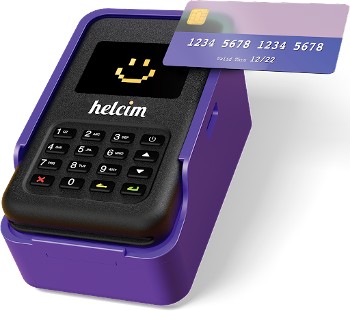
|
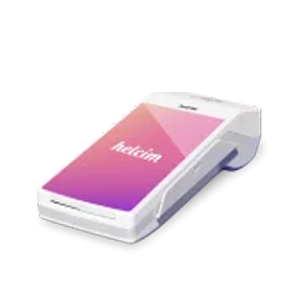
|
|
$109 |
$349 |
|
Tap, Chip & PIN transactions |
Tap, Chip & PIN transactions |
|
Email receipts, batch history, inventory tracking |
Email & print receipts, batch history, inventory tracking, built-in POS, employee logins |
Payment Depot: Cheapest Option With No Percentage Markup

Pros
- No percentage markup
- Low transaction fees
- 自由软件包括gateway and virtual terminal
- No cancellation fees
- Pricing model is easy to understand
- First month free for qualifying businesses
Cons
- High monthly fee
- US merchants only
- Does not work with high-risk businesses
- Requires application and approval
- Increase in negative reviews since being acquired by Stax
What we like:
Payment Depot offers wholesale credit card processing prices for small businesses by using a subscription pricing model. It’s a traditional merchant account, meaning businesses can expect secure and stable processing.
每月支付仓库的组合和成交方式代码表tion fees comes out as one of the cheapest options for established businesses, only rivaled by Helcim. Most interchange-plus processors, including Helcim and Dharma, charge a percentage markup on each transaction in addition to a flat fee. Payment Depot does not. This model allows for more predictability and is especially affordable for businesses with larger average order sizes.
- Monthly fee:$79 (Annual volume limit: $250,000)
- Transaction fee:
- Card-present: Interchange plus 8 cents
- Card-not-present: Interchange plus 18 cents
- Chargeback fee:$25
- No setup or cancelation fees; no long-term contracts
- Free virtual terminal and payment gateway
- $19.99 fee for businesses that fail to bePCI-compliant
While it does not have its own proprietary hardware, Payment Depot is compatible with a variety of hardware options. It supports mobile card readers, smart terminals, point of sale (POS), and standard payment terminals.
|
SwipeSimple B250 |
SwipeSimple Terminal |
Poynt Smart Terminal |
|---|---|---|
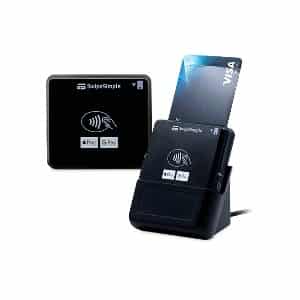
|
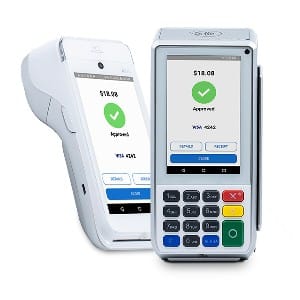
|
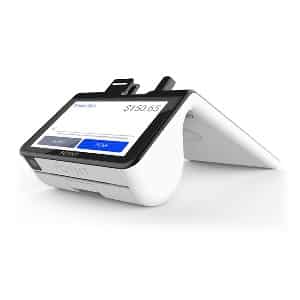
|
|
Mobile or Countertop Tap, Dip, and Swipe Reader |
Cloud-based tap, dip, swipe, or PIN-enabled card reader |
Mobile POS Terminal with built in card reader |
Payment processors like Helcim and Payment Depot can offer such low rates by minimizing risk. This means they are selective about who they work with. Dropshipping, event planning, lead generation, and other common business types may have trouble getting approved.
If you’ve been rejected by processors in the past or are concerned about your application being approved, consider working with ahigh-risk payment processor. Our recommended solution, PaymentCloud, works with many different back-end processors to offer higher approval odds and competitive pricing. It also guides you through the application process.Visit PaymentCloudto learn more.
Square: Best for New Businesses & Individuals

Pros
- Predictable, flat-rate fees
- No monthly, cancellation, or chargeback fees
- Instant signup, no application or approval required
- Free suite of software, including POS and invoicing
Cons
- Not the cheapest option for businesses processing more than $10,000 monthly
- Account stability issues—potential for frozen funds and shutdown accounts
- Not compatible with many high-risk businesses
- Limited customer service hours
What we like:
Square offers cloud-based credit card processing with competitive pay-as-you-go fees and freetop-rated POS software. These features make it not just one of the cheapest credit card processors but also one of thebest merchant processing service providersin the industry today.
Like most aggregated merchant account service providers, it’s easy to set up an account with Square. There is no approval process, which means you can start accepting payments as soon as you get access to your account.
I also like Square because of its free invoicing software, online store, online checkout tools, virtual terminal, and POS software. No other solution on this list offers such a wide array of free software and business solutions with no application or monthly fee required.
- Monthly fee:$0
- Transaction fees:
- Card-present: 2.6% + 10 cents per transaction
- Online: 2.9% + 30 cents per transaction
- Keyed-in and recurring billing: 3.5% + 15 cents per transaction
- Chargeback fee:None
- Discounts available:Volume discounts available for businesses processing more than $250,000 annually. Some software subscriptions also offer lower processing fees.
- Hardware:$0–$799
- One- to two-business day deposit time. Instant and scheduled same-day transfer for a 1.5% fee.
Square offers a range of proprietary mobile credit card readers and POS systems to fit any type of business. Price starts at $10, and you also get a free magnetic stripe reader upon sign-up.
Square Card Readers
|
Square Reader for Magstripe |
Square Reader for Contactless and Chip |
|---|---|
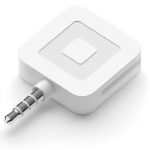
|

|
|
First free, additional $10 |
$49 |
|
Accepts payments via magstripe (swiped), available in jack or lightning connector |
Bluetooth reader that accepts EMV (chip), and NFC (Apple Pay, Google Pay) payments |
Square Terminals and POS Systems
|
Square Terminal |
Square Register |
Square Stand |
|---|---|---|
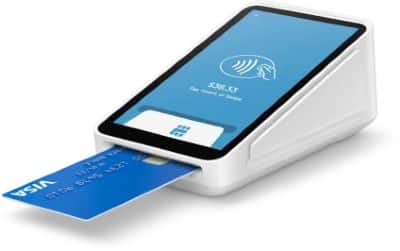
|

|
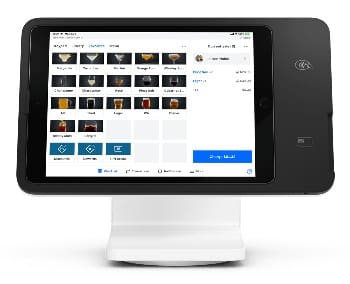
|
|
$299 or $27 per month for 12 months |
$799 or $39 per month for 24 months |
$149 or $14 per month for 12 months |
|
独立的移动POS可以订单,accept card payments and issue receipts. |
Full POS with touch-screen monitor, detachable customer-facing display, and credit card machine |
All-in-one credit card machine with POS, and built-in card reader |
One of the benefits of using Square is managing many business operations under one user-friendly ecosystem.Learn more about Squareand the products it offers.
Or, since it’s free to sign up and use, you can follow our guide tousing Square to process payments.
Chase Payment Solutions: Best for Fast Payouts

Pros
- Fast payouts
- Direct processor
- Transparent, flat-rate pricing
- Custom pricing available
- Uniquely advanced business insights
Cons
- Best if you use Chase Business Banking
- Contract may be required depending on the features and hardware you need
- Third-party reseller program (avoid this by going through Chase directly)
What we like:
It’s rare for a direct processor to offer merchant accounts directly to small businesses. SMBs using Chase for payment processing get all the benefits of working with a direct processor—like faster payouts (if you use Chase Banking), unmatched account stability, and detailed analytics.
Because Chase issues credit cards in addition to processing the transactions, it collects data on both sides of transactions and compiles this into actionable insights. In other words, in addition to data on transactions happening in your store, you also get insights on Chase card transactions happening in your neighborhood and with competitors.
Chase’s fees are similar to Square’s. However, custom pricing, including interchange-plus rates, may be available upon request.
- Monthly fee:$0–$15*
- Card-present transaction fee:2.6% + 10 cents
- Online transaction fee:2.9% + 25 cents
- ACH payments:
- Real time deposits: 1% (capped at $25), non reversible
- Same-day deposits: 1% (capped at $25), reversible
- Standard deposits (1-2 business days): $2.50 for the first 10 transactions, 15 cents for additional, reversible
- Chargeback fee: $25–$100 per transaction depending on dispute volume
- Card readers:$49.95–$399
- Chase typically offers pay-as-you-go contracts with no monthly or cancellation fees. However, every agreement is customized, and your specific needs may require a contract, particularly if you’re receiving a promotional rate.
- Chase generally offers same- and next-day payouts. Payouts are fastest if your funds are depositing into a Chase checking account.
*Merchants who use a Chase Business Banking account requires a $2,000 monthly maintaining balance or pay $15 for the month
Chase offers several mobile and countertop card readers. You can also accept payments through the Chase Quick Accept app and desktop virtual terminal
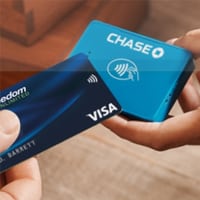
|
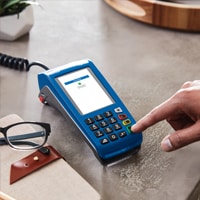
|

|
|
Mobile Card Reader
|
Countertop/Mobile Terminal
|
Smart Terminal
|
|
Best for accepting payments while on the go |
Best for traditional countertop setup |
Best for processing sales around the store |
|
$49.95
|
$299 to $399
|
$399
|
Stripe: Best for Online Payments

Pros
- No long-term contract
- Transparent, predictable pricing
- Fast signup; no minimum requirements or fees
- Global payment processing and free business management tools
- Robust online support
- Free developer tools
Cons
- Technical skills required to make the most of the platform
- Lack of clarity around reserves
- Potential for frozen funds or terminated accounts
What we like:
Stripe offers one of thebest payment gatewayson the market and is often considered the industry leader foronline credit card processing. It is extremely popular because of its developer-friendly platform, which supports more than 135 currencies and payment methods.
Stripe’s free open-source solutions can be used to create just about any kind of online checkout with just a per-transaction fee.
每一个自由条纹账户包括报告dashboard, simplified PCI compliance, 24/7 support, 3D secure identity authentication, automatic updates to expired customer cards on file, and free payouts in two business days. Plus, Stripe includes customer management, reporting, and basic product management.
- Monthly fee:$0
- Card-present transaction fee:2.7% + 5 cents
- Online transaction fee:2.9% + 30 cents
- ACH payments:0.8% with a $5 cap
- Recurring payments:Additional 0.5% per transaction
- Chargeback fee: $15 per lost dispute
- Card readers:$59–$249
- No contract or early termination fees
- Two-business-day payout speed, first payout can take seven to 14 business days. Instant payouts for a 1% fee.
Stripe offers several mobile hardware options. The Stripe Reader M2 and BBPOS Chipper are both compatible with iOS and Android devices and can process swipe, dip, and tap payments. Or, you can opt for a BBPOS WisePOS card reader if you prefer to accept payments connected to a desktop or mobile web.
New for Summer 2023: Stripe Reader S700
Stripe is launching a new Android-based smart terminal this summer. The software and display on this touch-screen device can be customized.
|
Stripe Reader M2 |
BBPOS WisePOS E |
Stripe Reader S700 |
|---|---|---|
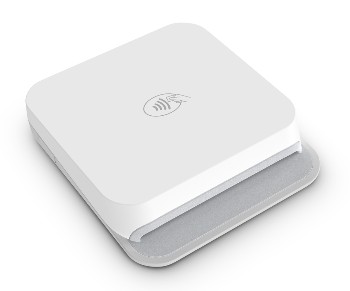
|
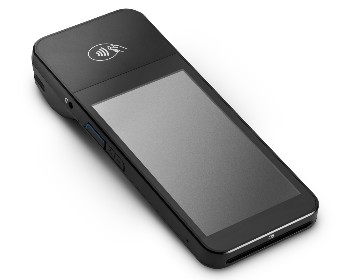
|
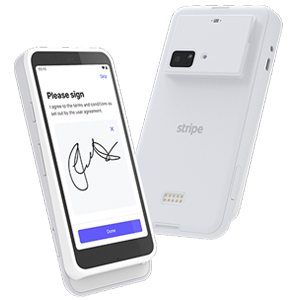
|
|
$59 |
$249 |
$349 |
|
Accept EMV chip, contactless, and mobile wallet payments. This battery-powered reader connects to your POS app via Bluetooth. |
Android-based POS with a 5-inch display including PIN functionality. Connects to a third-party POS app via Wi-Fi. |
Android-based smart reader for mobile and countertop use. Customize or use pre-built elements. Connects via Wi-Fi or Ethernet. |
Related:Sick of processing fees eating into your margins? We explore whether it’s realistic or profitable torun a cash-only business in 2023, and the the logistics of implementing acash discountingprogram.
Dharma: Best for Transparent Pricing & Business Practices

Pros
- Low interchange-plus pricing
- Next-day funding
- 24/7 support
- Supports Level 2 and Level 3 processing
- Free surcharging tools
- Automatic discounts if processing over $100,000 annually
Cons
- Strict application process
- No high-risk businesses
- Higher rates for American Express
- Monthly fee and account closure fee
What we like:
Dharma Merchant Services is a small independent merchant services provider that specializes in working with independent businesses. It offers extremely low-cost interchange-plus pricing, particularly for storefront and restaurant payments.
In addition to fair pricing and transparency―every single fee is listed directly on Dharma’s website―Dharma is also aneco-friendly companyand, to date, hasdonated nearly $750,000to nonprofits.
The payment processing industry is infamous for opaque pricing structures and hidden fees. However, Dharma’s founder created the business with a mantra of “commerce with compassion,” emphasizing pricing transparency, honest practices, and fair pricing. Based on my experience interacting with the company, along with feedback from businesses and other payment industry professionals, Dharma lives up to its mission.
- Monthly fee:$10–$15
- Card-present transaction fees:交换+ 0.15% + 8美分,0.25% + 8 cents for American Express
- Online transactions fees:Interchange plus 0.2% + 11 cents, 0.3% + 11 cents for American Express
- Nonprofit transaction fee:0.1% + 8 cents for storefront, 0.1% + 11 cents for online
- Chargeback fee:$25 per chargeback
- Account closure fee:$49
- Hardware:$149–$369
- 24-hour support and 24-hour funding available
Though Dharma is very transparent with its pricing, it is the only solution on this list that charges higher markups for Amex cards, and is the only one to charge an account closure fee, which contributed to its lower overall score.
佛法的硬件范围还包括移动card readers, payment terminals, and POS. It can be programmed into Clover hardware devices, while the mobile hardware supports direct MX Merchant gateway and mobile app integrations.
However, mobile card readers through Dharma start at $149—the most expensive on our list.
|
$295 |
$295 |
$369 |
Stax: Best for Surcharging & Recurring Billing
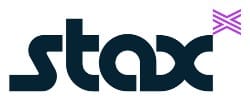
Pros
- Low transaction fees with no percentage markup
- Automatic updates for expired customer payment cards
- User-friendly software
- Surcharging capabilities
Cons
- Increase in negative user reviews around billing transparency and not being able to get customer support
- $99+ monthly fee
- Software like invoicing, reporting, and stored payments requires additional monthly fee
- Need to enter business and contact information for full pricing
What we like:
Stax (formerly Fattmerchant) is a subscription-model merchant services provider similar to Payment Depot—except that is designed for larger-volume businesses and offers more software add-ons.
I highly recommend Stax for high-volume businesses. Its wholesale transaction fees, affordable ACH bank transfer payments, and user-friendly invoicing tools and virtual terminal make it the best value when processing steady high-volume sales. Professional services, in particular, will find the most use in Stax’s invoicing, stored payments, and text-to-pay features.
Stax also offerssurcharging, where businesses can pass processing fees along to customers in states where it is legal to do so, which can significantly lower your fees.
- Monthly fee:$99–$199
- Card-present transaction fee:Interchange plus 8 cents
- Card-not-present transaction fee:Interchange plus 18 cents
- Chargeback fee:$25
- Deposit speed:Next-day (same-day with fee)
- Contract length:Effectively month-to-month
- Early termination/cancellation fees:$0
- Hardware:$59–$500
- Custom plans available for businesses processing more than $500,000 annually
Stax offers a variety of mobile readers, countertop terminals, and POS systems. In addition to the card readers below, Stax currently offers Clover POS systems.
|
Stax Pay Chipper 2X |
Clover handheld and countertop |
Dejavoo Z and QD Series |
|---|---|---|
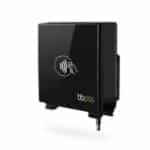
|

|

|
|
EMV-compliant Bluetooth-enabled swipe, dip, and tap reader for mobile or on-site payments |
The full line of Clover products from handheld readers to full registers |
Countertop, POS or Wi-Fi connected card reader |
In November 2021,Stax acquired CardX, a surcharging platform to enable Stax merchants to pass along credit card transaction fees to customers. If surcharging is enabled, customers can choose to do fee-free cash or debit card payments. Although surcharging is not legal in all states, Stax has state-level compliance.
贝宝& Venmo支付的贝宝:最佳

Pros
- Fast signup; no monthly minimums
- Flat-rate, pay-as-you-go pricing
- Accept PayPal, PayPal Credit, and Venmo payments
- Free invoicing, online checkout, and QR code payment tools
- Customer-friendly One Touch checkouts
Cons
- Account stability issues and hard-to-anticipate reserve policies
- Weekly limit for swiped and keyed-in payments
- 30-day hold on funds over weekly limit
What we like:
PayPal offers a free pay-as-you-go subscription for mobile and online payments, along with a popular trustworthy security seal. Overall, PayPal offers very competitive pricing and is among the easiest solutions toaccept payments online.
It also offers discounted rates for nonprofits, relatively low rates for QR code payments, and very competitively priced mobile payments through its POS app, Zettle.
Competitive rates and compatibility with many payment types, including Venmo, PayPal, cross-border and international payments, earned PayPal a spot on our list.
- Monthly fee:$0–$30
- PayPal checkout transaction fee:3.49% + 49 cents
- PayPal Zettle in-person transaction fee:2.29% + 9 cents
- Online card payments transaction fee:2.99% + 49 cents
- Quick response (QR) code transaction fees:2.29% + 9 cents
- Chargeback fee:$20; waived for certain transactions
- Dispute fee:$15
- Virtual terminal:3.09% + 49 cents, $30 per month
PayPal now offers PayPal Zettle in the US—instead of PayPal Here (discontinued on September 30, 2023)—for in-person payment processing. It comes with POS software and a set of hardware solutions, which includes a mobile card reader. Like Helcim, the Zettle Reader 2 is a PIN-pad-enabled card reader but is offered at a lower price point since the dock is optional. You can also get your first card reader at a discounted rate of $29 instead of the original $79.
PayPal also offers a new all-in-one mobile POS and card reader called Terminal. You can also opt for a built-in barcode scanner and receipt printer with Terminal.
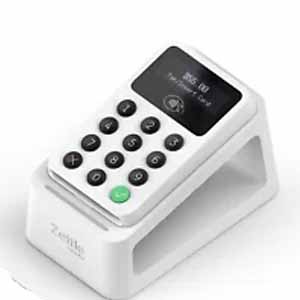
|
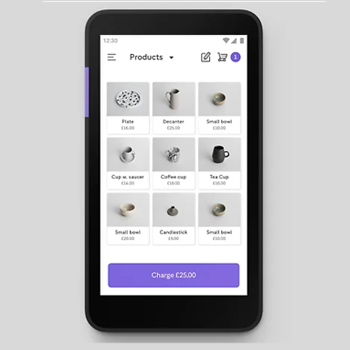
|
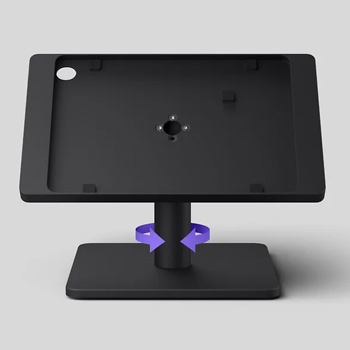
|
|
$79 (first one $29) |
$199 |
$159 |
Tips for Lowering Credit Card Fees
Although you can’t avoid them altogether, there are some steps you can take to lower your processing fees. Since processing fees are a huge recurring expense for every business, lowering your fees can save you hundreds, if not thousands, of dollars each month.
While working with the right processor will likely have the biggest impact, there are some other strategies you can use to reduce processing fees.
The first step to lowering your card processing rates is to encourage customers to pay in cash. Essentially, businesses can offset processing fees by building them into their regular prices and offering a discount for shoppers paying in cash. However, look closely at the laws in your particular state and local area. In many places, cash discounts are legal but credit surcharges are often not.
A common example of this is pricing at gas stations. If you walk inside and pay cash, the per-gallon price is lower than if you pay with a card at the pump.
Learn more:Read our how-to guide onzero-cost processing.
After cash, ACH and e-check payments are usually the cheapest payment method to accept. This option is ideal for businesses that use recurring payments like subscriptions or charge via invoice. Stax does not charge extra fees for ACH processing except for its monthly plan. For smaller businesses, Square offers free invoicing with ACH payments options. Square ACH processing fees are 1% per transaction with a $1 minimum. Alternatively, QuickBooks also has an ACH invoicing option that charges 1% per ACH transaction, which is practical if you are already using the accounting software.
Learn more:Read about ACH processing and the othermost affordable ways to accept payments online.
B2B businesses can qualify for even lower processing rates known as Level 2 or Level 3 processing. These rates are not available to most small businesses, especially business-to-consumer (B2C) businesses. However, if you are a business-to-business (B2B) company processing large volumes, check with a merchant account provider like Dharma Merchant Services.
Learn more:Read our full guide onLevel 2 and Level 3 payment processingand our top picks for thebest B2B payment processors.
Once your business grows to a place where you are consistently processing more than $20,000 per month, you can likely negotiate lower rates with different processors. Shop around and request quotes actively to see if you could be saving several hundred dollars per month by switching credit card processing companies.
At least on the surface, the most straightforward way to lower credit card processing fees is to pass them along to customers. This option is becoming increasingly popular, and there are more payment processors offering this service, including Stax.
However, surcharging is not legal in every state (although cash discounting is). Adding on extra fees to every transaction does not create a positive customer experience, which is crucial for retention and long-term business success.
Learn more:See ifcredit card surchargingis right for your business.
When your business faces a chargeback, if the dispute is not resolved in your favor, your business could be out the transaction fee from the initial purchase, the cost of the product or service itself, and potentially another transaction fee for the reimbursement. So, chargebacks are costly even as a one-off occurrence.
However, if your chargeback rates are above 1% of your total transactions, your processor might impose higher transaction fees and reserve requirements. A high chargeback rate could also cause your business to be labeled “high risk” which also results in higher processing fees.
Learn more:Tips forpreventing chargebacks, which is key for keeping transaction fees low.
As you saw with the rates listed in this guide, card-not-present transactions like ecommerce, keyed-in, invoicing, card-on-file, and payments made over the phone come with higher processing fees. This is because these types of payments have a higher risk for card networks and issuing banks as they are more susceptible to chargebacks and fraud.
Whenever possible, opt for card-present transactions like swipe, chip, andNFC payments. Because the customer is physically present there is less risk involved, and therefore the interchange fees and processor markups are lower.
Learn more:Interchange feesand factors that influence them.
How I Evaluated Cheap Credit Card Processors
The cheapest credit card processing for your business will vary depending on your sales volume, average order value, and the type of transactions you process. To find the cheapest overall options, I:
- Considered dozens of processors
- Narrowed our selection down to 15
- Evaluated them across 26 data points
- Calculated processing fees for various mock businesses
I only considered payment processors that offer flat-rate or interchange-plus pricing (the most transparent and usually the lowest cost) and excluded any that offer tiered rates as they can be deceiving.
Click through the tabs below for my full evaluation criteria:
35% of Overall Score
I prioritized solutions with the lowest transaction fees. I also considered cancellation fees, chargeback fees, and higher rates on certain card types (which is most common with American Express cards). Processors that have transparent and easily accessible pricing and volume discounts earned bonus points.
25% of Overall Score
Any provider that requires a long-term contract or long-term hardware leases was penalized.
Traditional merchant accounts earned points over aggregate processors because of the greater stability they offer with fewer holds and reserves.
20% of Overall Score
Processors that offer a variety of payment options, including mobile, ecommerce, ACH or echeck, virtual terminal, and card-on-file, earned the most points.
I also heavily considered deposit speed, availability of customer support, and whether or not the processor offers tools like virtual terminals, payment gateways, and POS software at no additional cost.
20% of Overall Score
The biggest factor here is pricing transparency.
I looked at sample statements and contracts where possible, along with reviews from other business owners, to make sure our top choices aren’t riddled with extra or surprise fees.
Additionally, I considered account stability and general ease of use, along with reviews and reputation for each processor. Finally, I considered how well each processor works with other popular small business software like POS systems, shopping carts, and accounting software.
Cheap Credit Card Processing Frequently Asked Questions (FAQs)
Typical credit card processing fees range from 1.9% to 3.75%.
Typically, your average rate should be less than 3%. If it is higher than 3%, I recommend re-negotiating your rates and getting quotes from other processors.
No. In some cases, businesses can pass along processing fees to customers through surcharging, cash discounting, or convenience fees, but someone will need to pay the fees issued by banks and card networks.
Secure payment methods like chip, contactless, and digital wallets are often the safest and least expensive credit card payment methods.
It is increasingly difficult to operate a cash-only business as fewer and fewer people are carrying cash. Some micro businesses get around this by accepting Venmo payments, but most businesses need to set up credit card processing to avoid missing out on sales.
Some processors offer surcharging services, which pass along processing fees to customers. These services typically come with a monthly fee. Stax and PaymentCloud are two popular processors that offer these services.
Bottom Line
In general, credit card processing and payment processing are necessary functions of any business, but they come at an expense. Many different payment processing companies advertise the lowest rates, and many of them have completely different fee structures. Finding the cheapest credit card processing is tricky but can save your business hundreds, if not thousands, of dollars every month.
If you’re not ready to choose, read more aboutmerchant accountsandhow credit card processing fees work.



